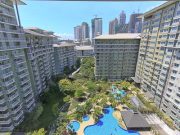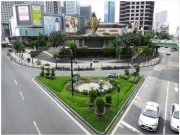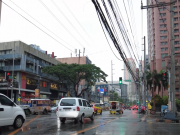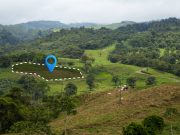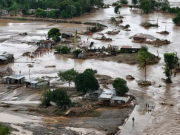Executive Summary
By Sheila Viesca, Ph.D.
With insights from John Riad, CEO of HousingInteractive
The paradigm shift towards remote work, accelerated by the recent global health crisis, has profoundly impacted various facets of life, none more so than residential demand. In the Philippines, this phenomenon spearheads a significant redistribution of real estate interest, moving away from the congested urban centers like Metro Manila and towards the more tranquil and often more affordable provincial regions. This comprehensive analysis, drawing insights from industry leaders like HousingInteractive and TalkShop, delves into the multifaceted aspects of this transformation, driving demand for suburban homes that cater to modern work-life needs, providing data, examples, and a forward-looking perspective for all stakeholders.
- Remote Work Drives Demand Shift: The global rise of remote work is fundamentally changing where people choose to live, moving demand away from dense urban centers like Metro Manila.
- Provinces Gaining Popularity: Employees prioritize lifestyle, affordability, and work-life balance, leading to increased demand for residential properties in suburban and rural Philippine provinces.
- More Than Half Prefer Flexibility: More than half of employees now prefer remote or hybrid work arrangements, and many businesses have already downsized their office space in response. This trend highlights the critical expectation of flexibility in the current job market.
- Residential Footprint Evolving: Remote workers seek homes with dedicated home office setups. This fuels residential conversions and mixed-use developments that integrate living, co-working, and collaboration spaces.
- Commercial Real Estate Impacted: Office buildings in major cities face higher vacancy rates as companies reduce their physical footprint. Some are being repurposed for residential or co-living spaces.
- Major and Long-Term Shift: This trend is not fleeting; it represents a significant, long-term rebalancing of how people live and work, akin to patterns seen in other global cities.
- New Market Opportunities: The shift creates new opportunities and challenges for real estate stakeholders, requiring adaptation to evolving market demands.
In summary, the global move to remote work is driving increasing demand for residential properties outside traditional urban centers. This shift is creating new opportunities and challenges in the real estate market, requiring stakeholders to embrace long-term trends and adapt to the evolving landscape.
1. Remote Work as a Long-Term Strategy
The COVID-19 pandemic undeniably forced a rapid, widespread adoption of remote work. What began as an emergency response has now solidified into a sustainable, long-term operational model embraced by many industries, offering flexibility and avoiding long-term commitments typical of traditional leases. This enduring shift is underscored by significant data: a report from McKinsey & Company indicates that over a quarter of the workforce in advanced economies can effectively operate remotely for most of the workweek (three to five days) without any detrimental impact on productivity. Further solidifying this trend, a 2020 survey by Gartner reveals that an overwhelming 82% of surveyed companies intend to maintain some form of remote work flexibility for their employees.
This fundamental change in work methodology carries profound implications for the real estate sector. With newfound flexibility, a growing segment of the workforce is no longer bound by the geographical constraints of traditional business districts. Consequently, their residential choices are now heavily influenced by factors beyond proximity to the office. The focus has decisively shifted towards:
- Affordability: Seeking more economical living solutions, often unavailable in prime urban centers.
- Access to Green Space: A desire for larger living areas, outdoor environments, and a connection with nature.
- Enhanced Work-Life Balance: The ability to integrate personal life more seamlessly with professional responsibilities, reducing stressful commutes and allowing for more personal time.
Philippine provinces are increasingly well-positioned to meet these evolving priorities, offering a compelling alternative to the often congested and costly urban lifestyle. This isn’t merely about convenience; it signifies a significant, fundamental re-evaluation of lifestyle priorities where quality of life prevails over traditional professional proximity.
Key Drivers of Remote Work Adoption:
| Driver | Description | Impact on Real Estate |
|---|---|---|
| Technological Advancement | Widespread access to high-speed internet, video conferencing tools, and cloud-based platforms. | Enables seamless work from anywhere, reducing the need for physical office proximity. |
| Cost Savings for Businesses | Reduced overhead costs associated with office space, utilities, and employee commutes. | Encourages companies to adopt remote or hybrid models, lessening demand for commercial office space. |
| Improved Work-Life Balance | Flexibility in schedules, reduced commute times, and the ability to integrate personal life with work. | Drives demand for larger homes with dedicated workspaces and access to recreational facilities. |
| Access to Diverse Talent Pool | Companies can hire talent from anywhere, not limited by geographical constraints. | Opens up opportunities for businesses to establish operations in provinces, spurring local economic growth. |
| Increased Employee Productivity and Satisfaction | Many studies show remote workers report higher job satisfaction and, in some cases, increased productivity. | Promotes long-term adoption of remote work, solidifying its impact on residential choices. |
2. A Turning Point for the Philippine Housing Market
Metro Manila has been the Philippines’ primary economic and commercial hub for decades, attracting talent and investment from across the country. Its rapid growth has brought vibrancy and opportunity, though it has also introduced challenges such as high population density, traffic congestion, air quality concerns, and rising living and property costs. These evolving dynamics are encouraging a positive trend towards urban decentralization, opening new possibilities for growth and development in other regions.
This shift is profoundly evident in the housing market, marking a turning point. HousingInteractive, recognized as the Philippines’ pioneering and largest online real estate brokerage, has reported a striking 37% year-on-year increase in property inquiries specifically for select provincial areas. This surge in interest is particularly noticeable in burgeoning provincial hubs such as Batangas, Baguio, Iloilo, and Davao, which are now attracting unprecedented attention from diverse buyer segments including young professionals seeking better quality of life, returning Overseas Filipino Workers (OFWs) looking for more value for their investments, and hybrid workers desiring a blend of urban amenities and provincial tranquility. More companies implementing flexible work models are also influencing this trend, as remote work allows buyers and renters to reconsider their living situations and preferences.
Further substantiating this monumental shift, a recent 2024 report from Lamudi highlights that provincial homes now constitute nearly 40% of all property searches on their platform. This dramatic increase from just 22% in 2019 illustrates a significant rebalancing of national housing demand. This data unequivocally signifies that Metro Manila’s gravitational pull is weakening, as more Filipinos actively explore and invest in residential opportunities beyond the traditional capital, fundamentally redefining the landscape of the Philippine housing market.
Provincial Value of Construction Cost (Year-on-Year, 2023 vs. 2024 – Select Provinces)
| Province/City | Average Construction Cost (2023-2024) | Primary Attractors |
|---|---|---|
| Batangas | 26.0% | Proximity to Metro Manila, beaches, and industrial zones |
| Baguio* | 45.96% | Cool climate, tourist destination, educational hub |
| Iloilo* | 6% | Emerging business hub, good infrastructure, cultural heritage |
| Davao* | – | Peace and order, a growing economy, and infrastructure development |
| Central Luzon* | 3.6% | Clark Freeport, New Clark City, accessibility |
Note: Average construction cost growth is estimated based on market trends and recent reports. Actual figures may vary.
*Batangas: Construction Statistics from Approved Building Permits Batangas- January 2024, PSA.
*Baguio: In the first quarter of 2024, the average construction cost in Baguio City was PhP 9,975.11 per square meter. By the second quarter of 2024, the average residential building construction cost in Benguet (which includes Baguio City, but the data specifically highlights residential) rose to PhP14,559.93 per square meter. This represents an approximate 45.96% increase in the average construction cost per square meter for residential buildings in Benguet compared to the overall construction cost in Baguio City from the previous quarter.
*Central Luzon: Average price acceleration of H&L units in Central Luzon (Pampanga, Bulacan, Tarlac) according to Central Luzon Property Market Updates 2024, Colliers, October 17, 2024, published by CREBA
This trend suggests a sustained interest in provincial living, transforming what was once a niche market into a significant segment of the Philippine real estate landscape.
3. Digital Infrastructure as the Key Enabler
The possibility of remote work hinges entirely on robust digital infrastructure, reflecting the new realities of the modern workplace. Without reliable and high-speed internet access, the vision of a decentralized workforce and thriving provincial economies remains just that – a vision. In the Philippines, digital access presents a significant challenge, yet simultaneously, it reveals immense opportunities for growth and investment.
The 2020 Census of Population and Housing (2020 CPH) provides a crucial snapshot of internet access and device penetration across Filipino households, offering valuable insights into the digital readiness of the nation. While the general perception is of increasing connectivity, a detailed look reveals significant regional disparities and preferred access methods, which inherently impact the viability and growth of remote work across the archipelago.
National Internet Access: A Foundation for Digital Transformation
Out of 26,374,653 households surveyed (excluding those in relocation areas, homeless individuals, and those in non-traditional dwellings), 56.1 percent, or 14,794,590 households, reported having internet access. This figure of over 50 million individuals having internet access underscores a foundational level of digital engagement, but also highlights that a significant portion of the population remains unconnected.
Regional Disparities in Internet Access
Internet access is far from uniform across the Philippines. The National Capital Region (NCR), as the economic and technological hub, leads the nation in household internet penetration. However, other regions are also showing strong digital adoption, surpassing the national average.
Household Internet Access by Region
| Region | Proportion of Households with Internet Access (%) | Share of Total Households with Internet Access (%) |
|---|---|---|
| National Capital Region (NCR) | 74.6% | 17.6% |
| Region IV-A – CALABARZON | 70.2% | 19.3% |
| Cordillera Administrative Region (CAR) | 62.8% | 3.0% (Estimated) |
| Region III – Central Luzon | 62.3% | 12.8% |
| National Average | 56.1% | 100% |
| … (Other Regions Below National Average) … | ||
| Bangsamoro Autonomous Region in Muslim Mindanao (BARMM) | Lowest | 1.7% |
Note: Share to total households for CAR is an estimate for illustrative purposes. The sum of shares to total households for listed regions may not be 100%, as this table only highlights key regions.
CALABARZON’s impressive 19.3% share of total internet-connected households, the highest among all regions, is particularly noteworthy. This indicates a large volume of digitally connected homes, reinforcing its status as a key region for suburban migration and remote work adoption.
Regional Breakdown of Main Internet Connection Types
| Region | Share of Households using Mobile Broadband (%) | Share of Households using Fixed (Wired) Broadband (%) |
|---|---|---|
| Region IV-A – CALABARZON | 17.9% | 23.4% |
| National Capital Region (NCR) | 16.0% | 26.4% |
| Region III – Central Luzon | 11.8% | 14.1% |
Data based on total households reporting each specific connection type (e.g., 17.9% of the 11.1 million mobile broadband households are in Region IV-A; 26.4% of the 3.97 million fixed-wired broadband households are in NCR).
This regional breakdown underscores that while CALABARZON has a strong mobile broadband presence, NCR remains the leader in fixed (wired) broadband penetration, which is often preferred for more stable and high-bandwidth remote work.
The fact that over half of Filipino households primarily connect from home is a direct indicator of the existing infrastructure and behavior that supports remote work. This “home-centric” connectivity model is foundational to the shift in residential demand towards areas that can better accommodate this digital lifestyle.
The Census data highlights the Philippines’ strong foundation for digital adoption, with most households having internet access primarily via mobile broadband, positioning the population well for flexible remote work arrangements. However, significant regional disparities in fixed broadband availability, especially in rural and underserved areas, pose challenges that require ongoing investment in reliable, high-speed internet infrastructure. Government initiatives like “Broadband ng Masa” and efforts by private telecommunications companies are crucial in bridging this digital divide, transforming provincial areas into attractive, connected hubs for the remote workforce.
“The value of real estate is no longer just about proximity to central business districts. It’s about quality of life and digital readiness,” says John Riad, CEO of HousingInteractive. “This is a pivotal moment for regional growth.”
4. Regional Variations: Emerging Growth Hotspots – A Decisive Shift in Real Estate Focus
While the national picture of the Philippine real estate market appears largely positive, a deeper, more granular analysis reveals that growth is far from uniformly distributed across the archipelago. Instead, certain provincial regions are now distinguishing themselves, significantly outperforming the national average and rapidly transforming into new magnets for both residential investment and broader economic activity, especially as people move away from big cities. This highlights the critical importance of understanding these localized dynamics for developers, investors, and prospective homebuyers.
These emerging hotspots are benefiting from a powerful synergy of factors, primarily driven by the remote work trend. The ability to work from anywhere has allowed individuals to seek a better quality of life, which these provinces are increasingly equipped to offer through strategic infrastructure development, improved connectivity, and a more appealing living environment.
Regional Real Estate Performance: Key Emerging Markets (2023-2024 Estimates)
| Region | Primary Growth Drivers | Key Cities/Provinces Benefiting |
|---|---|---|
| Central Visayas | Robust tourism rebound, significant BPO sector expansion, and ongoing public and private infrastructure projects. | Cebu City, Mactan (Lapu-Lapu City), Bohol. |
| CALABARZON | Sustained industrial growth, increasing suburbanization from Metro Manila, and high adoption of remote and hybrid work models. | Laguna, Cavite, Batangas. |
| Central Luzon | Strategic development around Clark Freeport, extensive new infrastructure (roads, rail), booming logistics and manufacturing industries. | Pampanga, Tarlac, Bataan, Bulacan. |
| Davao Region | Strong emphasis on peace and order, ongoing major infrastructure development, and resilient agricultural industries. | Davao City, Samal Island. |
These regional outperformances are a direct consequence of concerted efforts in infrastructure development, strategic economic planning, and the evolving preferences of a workforce no longer tethered to a physical office, seeking to avoid long commutes.
Spotlight on Accelerating Growth Regions
Large cities and several provincial regions are specifically emerging as prime beneficiaries of the remote work phenomenon, their growth fueled by a strategic confluence of infrastructure advancements, desirable geographic locations, and an enhanced quality of life.
Clark Freeport and New Clark City (Pampanga-Tarlac)
The Clark region has positioned itself as a formidable economic and residential hub, largely propelled by strategic investments and comprehensive master planning. The significant expansion of Clark International Airport, coupled with an intricate network of modern road infrastructure like the Subic-Clark-Tarlac Expressway (SCTEx) and Tarlac-Pangasinan-La Union Expressway (TPLEx), has fundamentally catalyzed both residential and commercial development, influencing housing costs in the region. Property values in areas adjacent to these developments have shown remarkable appreciation, with annual increases of 20–25% since 2018. New Clark City, envisioned as a smart, green, and disaster-resilient metropolis, offers a compelling, well-planned alternative to the urban sprawl of Metro Manila.
Key Developments and Investment in the Clark Region:
- Clark Global City: A vast 177-hectare master-planned development, meticulously designed to integrate business, residential, and lifestyle components into a dynamic urban center.
- National Government Administrative Center (NGAC): This area houses key government agencies, attracting a steady influx of government employees and ancillary businesses, thereby creating demand for housing and services.
- High-Speed Rail Project (North-South Commuter Railway Extension): This crucial infrastructure project will further enhance connectivity to Metro Manila, significantly reducing travel times and making daily or weekly commutes more feasible for hybrid workers.
Source: Real estate intelligence reports from Colliers International and Leechiu Property Consultants, 2023-2024. Data on property value appreciation near Clark is often cited by these firms.
Iloilo: The “Next Makati” in the Visayas
Iloilo City has undergone a remarkable transformation, earning it the moniker “the next Makati” in the Visayas region. The strategic development of the Iloilo Business Park, a sprawling integrated township encompassing residential condominiums, BPO towers, hotels, and retail centers, has significantly enhanced the city’s real estate footprint. Major developers like Megaworld and Ayala Land have collectively invested over PHP 20 billion in the region, signaling strong confidence in its growth trajectory. Beyond its modern infrastructure, Iloilo is also celebrated for its strong governance, vibrant cultural heritage, and a balanced mix of urban amenities and historical charm.
Key Highlights of Iloilo’s Growth:
- Iloilo Business Park: A prime example of a mixed-use development that caters to the diverse needs of residents, businesses, and tourists.
- Iloilo International Airport: A vital gateway that efficiently connects the city to major domestic and, increasingly, international destinations, boosting accessibility for business and leisure.
- Ongoing Infrastructure Projects: Continuous improvements to its road networks and a planned port expansion are further enhancing Iloilo’s logistical capabilities and connectivity, solidifying its role as a regional hub.
Source: Developer reports from Megaworld and Ayala Land investor presentations, 2023. Local government economic reports from Iloilo City.
Davao: Mindanao’s Anchor of Stability and Growth
Davao City stands as the undisputed economic and administrative capital of Mindanao, attracting both domestic and foreign investors due to its compelling combination of rapid infrastructure development, a reputation for safety, and effective governance. The demand for more space has also contributed to this growth, as people seek larger living environments away from city centers. Property prices in Davao have experienced a steady increase of 15% over the past three years, reflecting sustained demand and investor confidence.
Key Attractions and Developments in Davao:
- Davao Coastal Road: This vital infrastructure project significantly reduces travel time within the city and greatly improves overall accessibility, enhancing daily life for residents.
- Samal Island-Davao City Connector Bridge (Davao-Samal Bridge): This highly anticipated bridge is expected to be a game-changer, dramatically boosting tourism and, consequently, residential demand on the picturesque Samal Island, transforming it into a more accessible leisure and living destination.
- Strong Local Economy: Davao boasts a highly diversified economy, with robust sectors spanning agriculture, manufacturing, and services, ensuring a stable and dynamic job market.
Source: Local government economic reports from Davao City, property market analysis from reputable local real estate firms (e.g., KMC Savills Davao office), 2023-2024.
Batangas and Laguna: CALABARZON’s Premier Suburban Havens
The provinces of Batangas and Laguna, nestled within the CALABARZON region, offer a near-perfect equilibrium of accessibility to Metro Manila and an enhanced lifestyle. Their strategic proximity to the capital via major expressways like the South Luzon Expressway (SLEX) has positioned them as highly sought-after suburban havens for a diverse demographic, including remote professionals, growing families, and retirees. Real estate agents are experiencing a surge in demand as buyers seek single-family homes that offer more space and amenities suited to remote working lifestyles. These provinces boast a rich blend of thriving residential developments, expansive industrial zones, and easily accessible natural attractions.
Why Batangas and Laguna are Popular Choices:
- Exceptional Accessibility: Both provinces are exceedingly well-connected to Metro Manila through an intricate network of expressways, including SLEX, CALAX (Cavite-Laguna Expressway), and STAR Tollway, making occasional commutes manageable.
- Affordability Advantage: Generally, property prices in Batangas and Laguna are considerably lower than those in Metro Manila, offering greater value for investment in terms of space and amenities.
- Enhanced Quality of Life: Residents enjoy convenient access to a variety of natural attractions, including stunning beaches in Batangas and serene mountain resorts in Laguna, coupled with numerous recreational and leisure activities.
- Established Education Hubs: The presence of several reputable universities and colleges in these provinces further enhances their appeal for families, ensuring access to quality education.
Source: Colliers International Philippines Research, Leechiu Property Consultants reports on CALABARZON, 2023-2024. Developer project reports for major subdivisions in Laguna and Batangas.
5. Private Sector Leadership: HousingInteractive’s Role
As digital real estate searches become the standard, HousingInteractive is revolutionizing how investors and homebuyers connect with properties. Boasting the country’s most extensive database, the company tracks demand trends in real time, enabling the identification of emerging hotspots and shifts in buyer preferences by considering not just square footage but also the quality and functionality of the workspace.
Their advanced analytics pinpoint undervalued growth corridors, empowering clients to capitalize on early appreciation opportunities. Through strong partnerships with developers and agencies, HousingInteractive facilitates faster transactions and greater market transparency—key factors in building confidence within emerging provincial markets. Essentially, their platform bridges the information gap, seamlessly connecting potential buyers with the dynamic and evolving provincial real estate landscape.
HousingInteractive’s Enhanced Value Proposition for the Remote Work Era
| Feature/Service | Detailed Benefit to Stakeholders | Impact on Remote Work-Driven Demand |
|---|---|---|
| Most Extensive Provincial Property Database | Provides a comprehensive, granular selection of properties (houses, lots, condos, mixed-use) across all emerging provincial markets. Caters to diverse needs, from spacious family homes to investment properties, and even properties suitable for co-living or rental. | Enables remote workers to find properties matching specific lifestyle preferences (e.g., larger space, green areas) and budget constraints outside Metro Manila, without physical travel for initial search. |
| Real-time Demand Trend Analytics & Heat Maps | Offers dynamic insights into buyer behavior, popular locations, property types, and price ranges currently in demand. Helps investors identify high-growth areas and developers understand unmet market needs. | Allows developers to tailor projects to remote worker needs (e.g., dedicated home offices, strong internet infrastructure) and helps remote buyers identify areas with burgeoning communities and services. |
| Identification of Undervalued Growth Corridors | Utilizes proprietary algorithms and market intelligence to pinpoint areas with high potential for significant capital appreciation before they become mainstream. | Guides astute investors to opportunities for early entry into promising provincial markets, maximizing long-term returns from the decentralization trend. |
| Seamless Partnerships with Developers & Agencies | Facilitates direct access to exclusive listings, pre-selling opportunities, and streamlined communication channels with property owners and project managers. | Reduces friction and uncertainty in transactions for remote buyers unfamiliar with local provincial markets, building trust and efficiency. |
| Advanced Virtual Tours & Digital Documentation | Provides immersive 3D virtual tours, high-resolution imagery, drone footage, and comprehensive digital documentation (e.g., e-brochures, payment schemes, legal documents). | Crucial for remote buyers to evaluate properties thoroughly without requiring immediate physical visits, significantly accelerating the decision-making process. |
| Personalized Market Insights & Expert Consultations | Offers tailored advice from experienced real estate professionals, providing a deeper understanding of local regulations, market nuances, and investment strategies in provincial areas. | Equips remote buyers and investors with the necessary knowledge to navigate the complexities and unique characteristics of provincial real estate, mitigating risks. |
| Integrated Digital Transaction & Communication Platform | Centralizes communication, offers submission, and document exchange, ensuring a secure and transparent process from inquiry to closing. Provides access to stronger local talent pools, enhancing flexibility and reducing costs. | Supports end-to-end remote transactions, providing convenience and peace of mind for clients who may not be physically present in the province. |
6. Human Capital and Remote Readiness: The TalkShop Advantage
While real estate changes are tangible, the success of remote work ultimately depends on people. This is where TalkShop plays a vital, complementary role in helping communities attract residents by enhancing their appeal through improved communication and leadership skills.
As the Philippines’ premier communication, leadership, and executive presence training provider, TalkShop empowers professionals to excel in hybrid and remote work environments. Their comprehensive programs focus on:
- Mastering Online Presentation and Persuasion: Enhancing virtual communication skills to effectively engage and influence audiences remotely.
- Leading Across Time Zones: Developing strategies for managing and motivating teams spread across different geographic locations.
- Cultivating Cultural Intelligence for Remote Collaboration: Navigating and leveraging diverse cultural dynamics within virtual teams.
- Building Resilience and Supporting Mental Well-being in Isolated Work Settings: Providing tools to maintain focus, reduce stress, and foster connection in remote work contexts.
“You can work anywhere, but you must still lead, communicate, and grow,” says Sheila Viesca, CEO of TalkShop. “That’s the transformation we help make possible.”
TalkShop, an ISO-Certified and Civil Service-accredited training firm, has partnered with multinationals, government agencies, and NGOs, empowering teams across Luzon, Visayas, and Mindanao. Their training programs are crucial for ensuring that the workforce is ready for the demands of remote and hybrid work models, regardless of their physical location.
TalkShop’s Training Modules for Remote Work Success:
| Module | Key Learning Outcomes | Target Audience |
|---|---|---|
| Effective Virtual Communication | Master virtual meeting etiquette, deliver compelling online presentations, and write clear and concise remote communications. | All remote and hybrid employees, team leaders. |
| Remote Leadership Excellence | Develop strategies for motivating remote teams, fostering collaboration, and managing performance in a virtual setting. | Managers, team leads, and project managers. |
| Building Resilient Remote Teams | Address mental health challenges of remote work, promote work-life integration, and build strong virtual team cohesion. | HR professionals, team leaders, and employees. |
| Cross-Cultural Collaboration in a Digital World | Understand and leverage cultural differences in diverse remote teams, avoid misunderstandings, and build trust. | Employees in multinational companies, teams with diverse members. |
| Time Management and Productivity for Remote Workers | Develop effective self-management techniques, minimize distractions, and maximize productivity in a home office environment, including the use of collaboration zones. | All remote and hybrid employees. |
7. Risks and Realities
As with any significant market transition, several risks remain:
- Infrastructure Delays: The timelines for both digital and physical infrastructure projects often extend beyond initial projections, which can slow growth in targeted areas.
- Environmental Risks: Certain promising locations face natural hazards such as flooding or earthquakes, requiring meticulous planning and resilient construction practices. For instance, some coastal zones in Batangas are vulnerable to storm surges, while parts of Pampanga experience frequent flooding.
- Market Oversaturation: A surge of developers entering the market simultaneously may lead to oversupply, potentially depressing property values, especially in rapidly expanding regions.
- Limited Social Amenities: While provincial areas offer space and affordability, some remote locations may lack essential amenities such as quality healthcare, diverse entertainment, or specialized education facilities.
- Regulatory Hurdles: Variations in local government policies and land use regulations can pose challenges for developers and investors alike.
Given these factors, data-driven decision-making, policy alignment, and strategic long-term planning are crucial. Building resilience into regional development efforts is essential, and stakeholders must conduct thorough due diligence and foster collaborative approaches to effectively mitigate these risks. The shift towards working remotely has also influenced these dynamics, as it allows individuals to reconsider their living arrangements, impacting property prices and availability in suburban and rural areas.
8. Government Support: The ‘Build Better More’ Agenda and Its Transformative Impact
Under the current administration, infrastructure investment is being refocused for inclusivity and resilience. “Build Better More” emphasizes:
- Digital Infrastructure for Remote Learning and Working: Expanding broadband access to underserved areas to ensure digital equity. This includes the National Broadband Program.
- Regional Connectivity Through Roads, Bridges, and Seaports: Enhancing logistics and travel efficiency, connecting provincial economies to major markets. Examples include the Luzon Spine Expressway Network and the Mindanao Railway Project.
- Urban Decentralization to Ease Pressure on Metro Manila: Encouraging development in regional centers through incentives and infrastructure support, while balancing the benefits of urban living with the need for dedicated workspaces in homes due to remote work trends.
The National Economic and Development Authority (NEDA) projects that these programs will increase countryside GDP by 2.3% annually if implemented as planned. This government commitment is a strong indicator of sustained growth in provincial areas.
This robust government commitment, combined with the shifting preferences of the workforce, forms a powerful synergy that is actively reshaping the Philippine real estate landscape, directing investment and development towards a more inclusive and geographically diverse future.
9. The New Investment Playbook
Success in the remote-work era will depend on foresight and flexibility. Investors are advised to:
- Assess Digital Readiness: Proximity to telecom infrastructure is now as critical as water and power. Invest in areas with existing or planned fiber optic networks.
- Favor Mixed-Use Zones: Work-life-play environments are preferred by hybrid professionals. Developments that integrate residential, commercial, and recreational spaces will be more attractive.
- Prioritize Sustainability: Eco-conscious developments command higher premiums. Features like solar integration, rainwater harvesting, green spaces, and walkability are increasingly sought after.
Ayala Land reports that residential units with solar integration and walkability features see 15–20% faster absorption rates in provincial areas. This highlights a growing awareness and preference for sustainable living among property buyers. Traditional leases, with their long-term commitments, are becoming less attractive as businesses seek more flexible solutions.
Investment Checklist for the Remote Work Era:
| Criteria | Importance | Examples/Considerations |
|---|---|---|
| Reliable Internet Access | High | Fiber-ready communities, presence of major ISPs. |
| Dedicated Workspace Potential | Medium to High | Homes with extra rooms, co-working spaces within developments. |
| Access to Green Spaces/Nature | High | Parks, nature reserves, quiet neighborhoods. |
| Proximity to Essential Services | High | Hospitals, schools, and supermarkets are within a reasonable distance. |
| Security and Safety | High | Gated communities, well-lit areas, and low crime rates. |
| Community Amenities | Medium | Clubhouses, gyms, swimming pools, and recreational facilities. |
| Sustainable Features | Growing | Solar panels, rainwater harvesting, and energy-efficient designs. |
| Traffic and Commute Time (local) | Medium | While not commuting to Manila, local traffic can still impact the quality of life, so it’s important to adapt quickly to changing traffic patterns. |
10. John Riad’s Insight: Regional is the New Central
“We’ve seen this before in other countries. Technology enables decentralization, but trust, security, and foresight make it sustainable,” says John Riad.
The long-term success of provincial growth hinges on these foundational elements. Investors and developers need to build trust through transparent practices and ensure the security of their investments through informed decisions.
“HousingInteractive is committed to guiding this new wave of investment by providing transparent data, expert insights, and service that goes beyond location.”
Its role as an information hub and trusted advisor is more critical than ever in this evolving market. Metro Manila, like other major metropolitan areas, is experiencing significant challenges in real estate due to declining office rents and a shift in housing demand brought on by remote work.
11. TalkShop’s Role in Future-Ready Professionals
As business decentralizes, so must leadership development. TalkShop’s nationwide programs now reach provincial BPOs, LGUs, and real estate firms, ensuring that the workforce evolves in tandem with geography. This localized approach to professional development is key to empowering provincial talent, especially as digital nomads seek out affordable and desirable locations, impacting local economies.
By embedding values-based leadership and communication excellence across the country, TalkShop is helping local economies become globally competitive. Their training programs are designed to address the specific needs of provincial businesses and professionals, fostering growth and innovation beyond the traditional urban centers.
The Decentralized Future Is Now
Remote work is no longer an exception—it’s the future. And it’s redrawing the map of residential demand across the Philippines, shifting the ‘go-to’ locations from urban centers to suburban areas as families seek more space and an improved quality of life. This shift is not merely a temporary blip but a fundamental transformation of how Filipinos choose to live and work.
The winners in this transition will be those who act early, whether as developers, investors, policymakers, or professionals. With digital infrastructure improving, lifestyle trends evolving, and expert guidance from platforms like HousingInteractive and TalkShop, the future of Philippine real estate is more inclusive, more distributed, and more resilient than ever. The opportunities for growth and sustainable development in the provinces are immense, paving the way for a more balanced and robust national economy.



